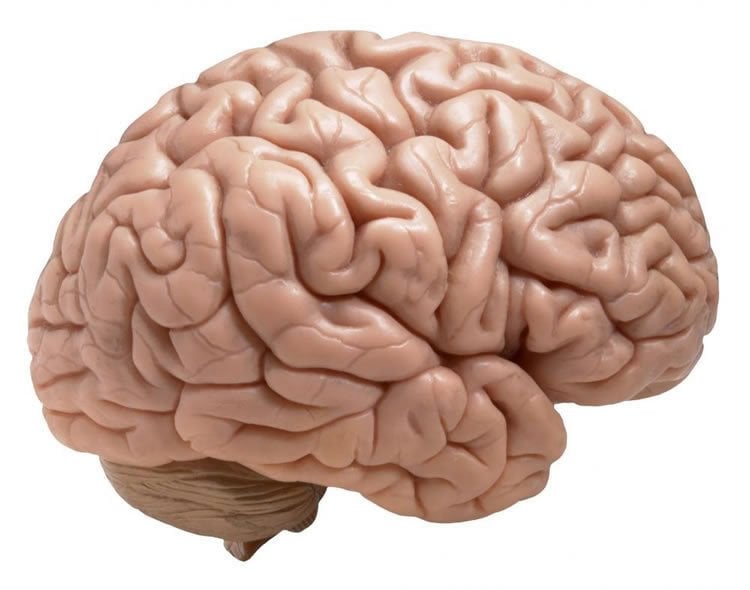Summary: A new study reveals the brain may reassign tasks to different regions of the brain in order to counter the onset of neurodegenerative diseases.
Source: Baycrest Center for Geriatric Care.
The brain continues to put up a fight even as neurodegenerative diseases like dementia damage certain areas and functions. In fact, recent findings in a Baycrest-University of Arizona study suggest that one method the brain uses to counter these diseases is the reassigning of tasks to different regions.
Patients diagnosed with Primary Progressive Aphasia (PPA), a rare form of dementia that robs a person of the ability to communicate, tapped into a different brain region to process the meaning of words, according to an article published in the journal Neuroimage: Clinical. Typically people rely on the left side of the brain to comprehend words we read or hear, but PPA patients showed more brain activity on the right. These findings could be used to help develop targeted treatments to preserve brain function.
Previous studies have shown that this preservation tactic is used after brain damage, such as traumatic brain injury or stroke, but this is one of the first studies to demonstrate the phenomenon in a neurodegenerative disease.
“These findings offer hope since it demonstrates that despite the brain’s degeneration during PPA, it naturally adapts to try and preserve function,” says Dr. Jed Meltzer, the senior author, a scientist at Baycrest’s Rotman Research Institute (RRI) and Canada Research Chair in Interventional Cognitive Neuroscience. “This compensation suggests there are opportunities to intervene and offer targeted treatment to those areas.”
The study captured brain imaging of 28 adults between the ages of 58 and 83, 13 of whom were diagnosed with PPA. While having their brains scanned, research participants were asked to read sentences that appeared on the screen, some of which had grammatical errors or mismatched words.
When a healthy adult processes the sentences with mistakes, there’s a spike in brain activity since the brain needs to work harder to make sense of it, says Dr. Meltzer, who is also an assistant professor in the departments of psychology and speech language pathology at the University of Toronto. People with PPA had greater difficulty detecting the mistakes and demonstrated a slower and smaller spike in brain activity when picking up on incorrect words, which could mean they weren’t processing them as thoroughly, says Dr. Meltzer. Those with PPA who performed better showed a larger response in the opposite side of the brain, the right, compared to healthy adults.

“We were able to identify regions of the brain that allowed the patients to compensate for the dying of neurons in the brain,” says Dr. Aneta Kielar, assistant professor of speech, language and hearing sciences and of cognitive science at the University of Arizona, who did the work as a part of a postdoctoral fellowship at the RRI. She said knowing which areas of the brain people with PPA use to understand language may help in developing treatments.
The slower brain responses could also be used by doctors to assess the disease’s severity and lead to treatments being started even earlier, adds Dr. Meltzer. As next steps, scientists are using this brain activity data to help treat PPA patients with targeted brain stimulation. Their work will also explore the short- and long-term effects of this intervention.
Funding: This work was supported by the Ontario Brain Institute, the Alzheimer’s Association, the Ontario Research Coalition and the Sandra A. Rotman Program in Cognitive Neuroscience. The research team also included Dr. Regina Jokel and Tiffany Deschamps.
Source: Andy Levy-Ajzenkopf – Baycrest Center for Geriatric Care
Publisher: Organized by NeuroscienceNews.com.
Image Source: NeuroscienceNews.com image is in the public domain.
Original Research: Open access research for “Abnormal language-related oscillatory responses in primary progressive aphasia” by Kielar A., Deschamps T., Jokel R., and MeltzerJ.A. in NeuroImage: Clinical. Published March 1 2018,
doi:10.1016/j.nicl.2018.02.028
[cbtabs][cbtab title=”MLA”]Baycrest Center for Geriatric Care “The Brain Combats Dementia By Shifting Resources.” NeuroscienceNews. NeuroscienceNews, 11 April 2018.
<https://neurosciencenews.com/dementia-resources-brain-8759/>.[/cbtab][cbtab title=”APA”]Baycrest Center for Geriatric Care (2018, April 11). The Brain Combats Dementia By Shifting Resources. NeuroscienceNews. Retrieved April 11, 2018 from https://neurosciencenews.com/dementia-resources-brain-8759/[/cbtab][cbtab title=”Chicago”]Baycrest Center for Geriatric Care “The Brain Combats Dementia By Shifting Resources.” https://neurosciencenews.com/dementia-resources-brain-8759/ (accessed April 11, 2018).[/cbtab][/cbtabs]
Abstract
Abnormal language-related oscillatory responses in primary progressive aphasia
Patients with Primary Progressive Aphasia (PPA) may react to linguistic stimuli differently than healthy controls, reflecting degeneration of language networks and engagement of compensatory mechanisms. We used magnetoencephalography (MEG) to evaluate oscillatory neural responses in sentence comprehension, in patients with PPA and age-matched controls. Participants viewed sentences containing semantically and syntactically anomalous words that evoke distinct oscillatory responses. For age-matched controls, semantic anomalies elicited left-lateralized 8–30 Hz power decreases distributed along ventral brain regions, whereas syntactic anomalies elicited bilateral power decreases in both ventral and dorsal regions. In comparison to controls, patients with PPA showed altered patterns of induced oscillations, characterized by delayed latencies and attenuated amplitude, which were correlated with linguistic impairment measured offline. The recruitment of right hemisphere temporo-parietal areas (also found in controls) was correlated with preserved semantic processing abilities, indicating that preserved neural activity in these regions was able to support successful semantic processing. In contrast, syntactic processing was more consistently impaired in PPA, regardless of neural activity patterns, suggesting that this domain of language is particularly vulnerable to the neuronal loss. In addition, we found that delayed peak latencies of oscillatory responses were associated with lower accuracy for detecting semantic anomalies, suggesting that language deficits observed in PPA may be linked to delayed or slowed information processing.






